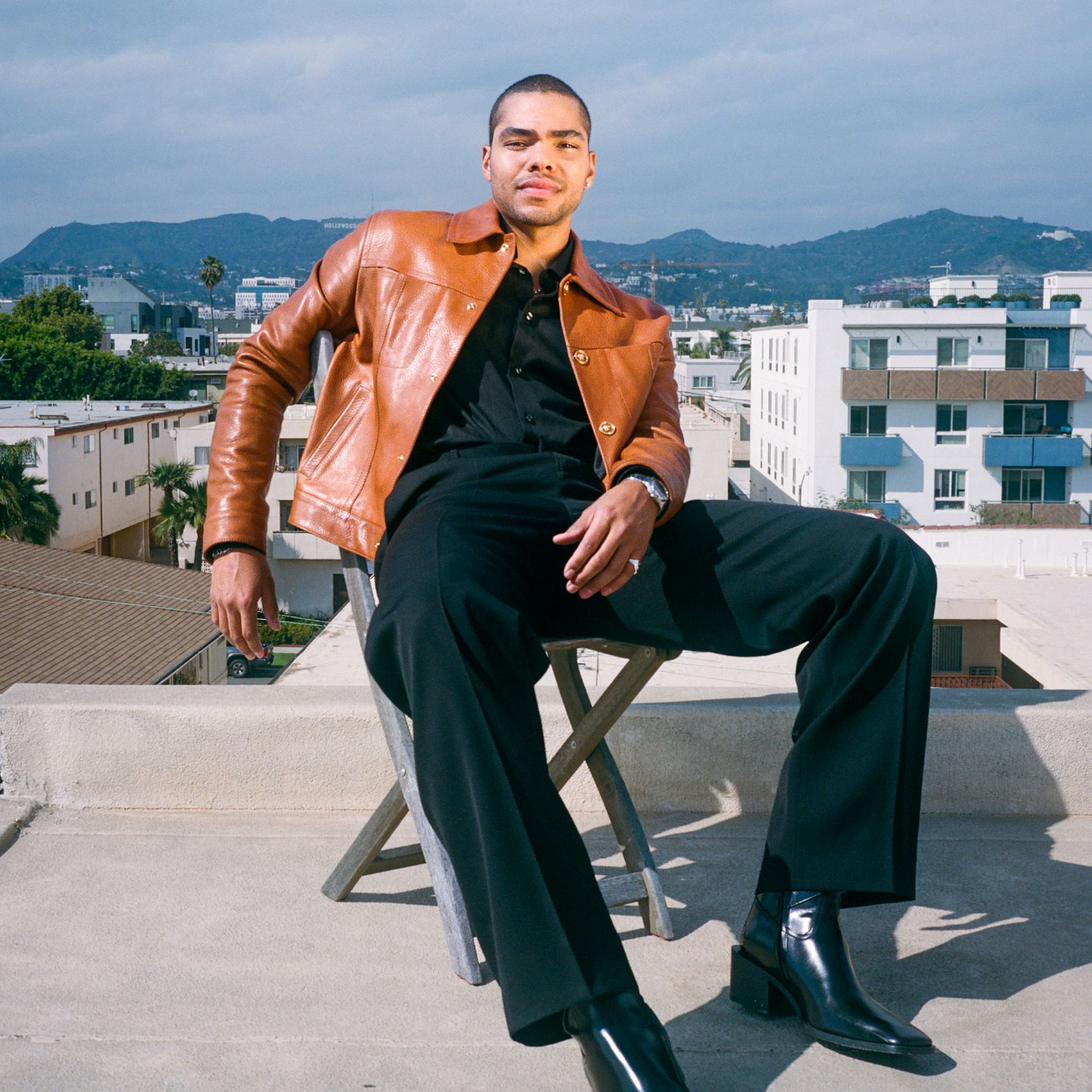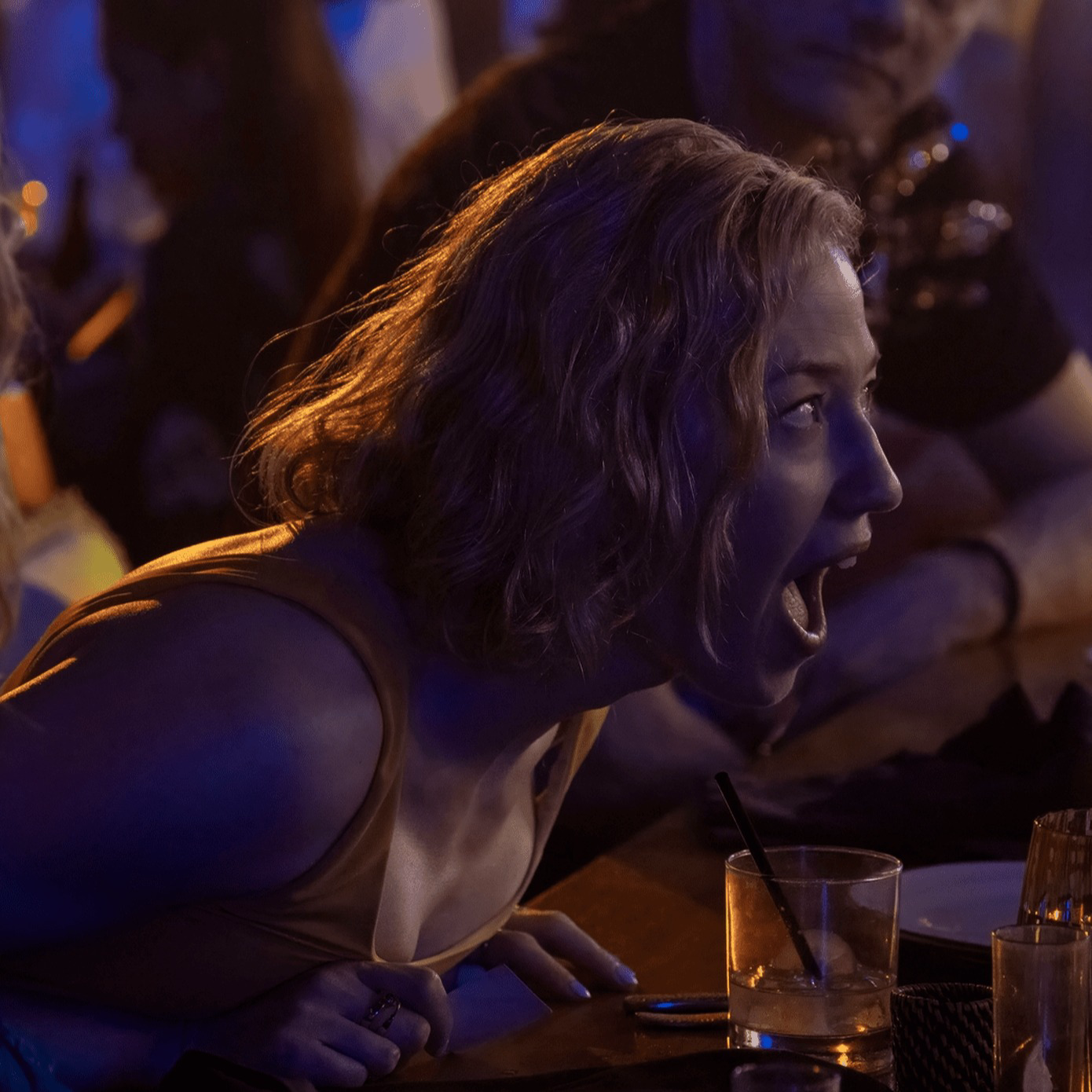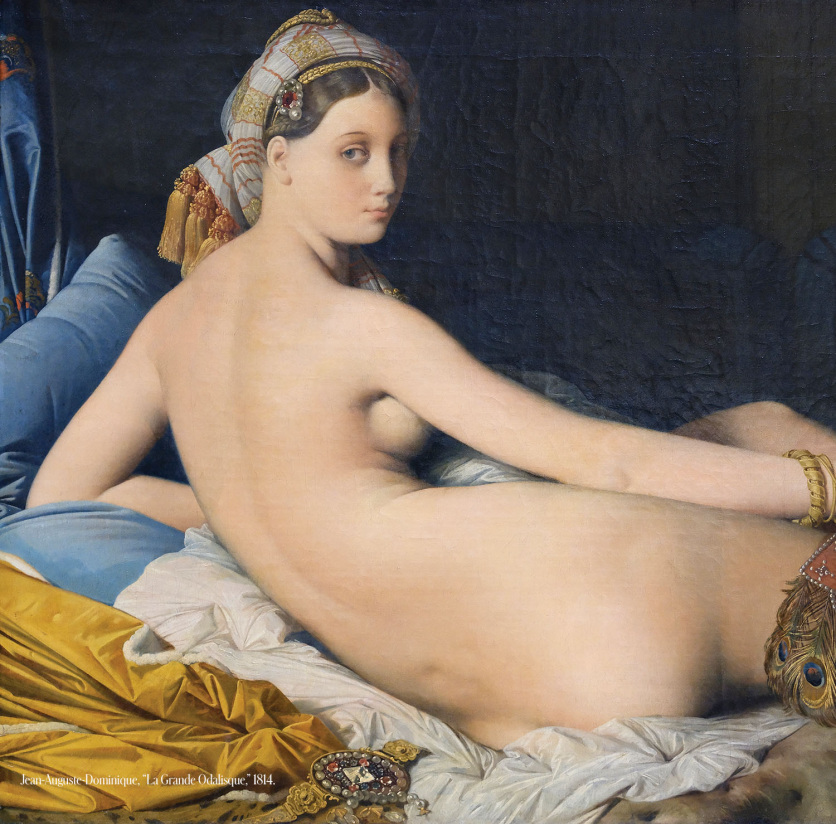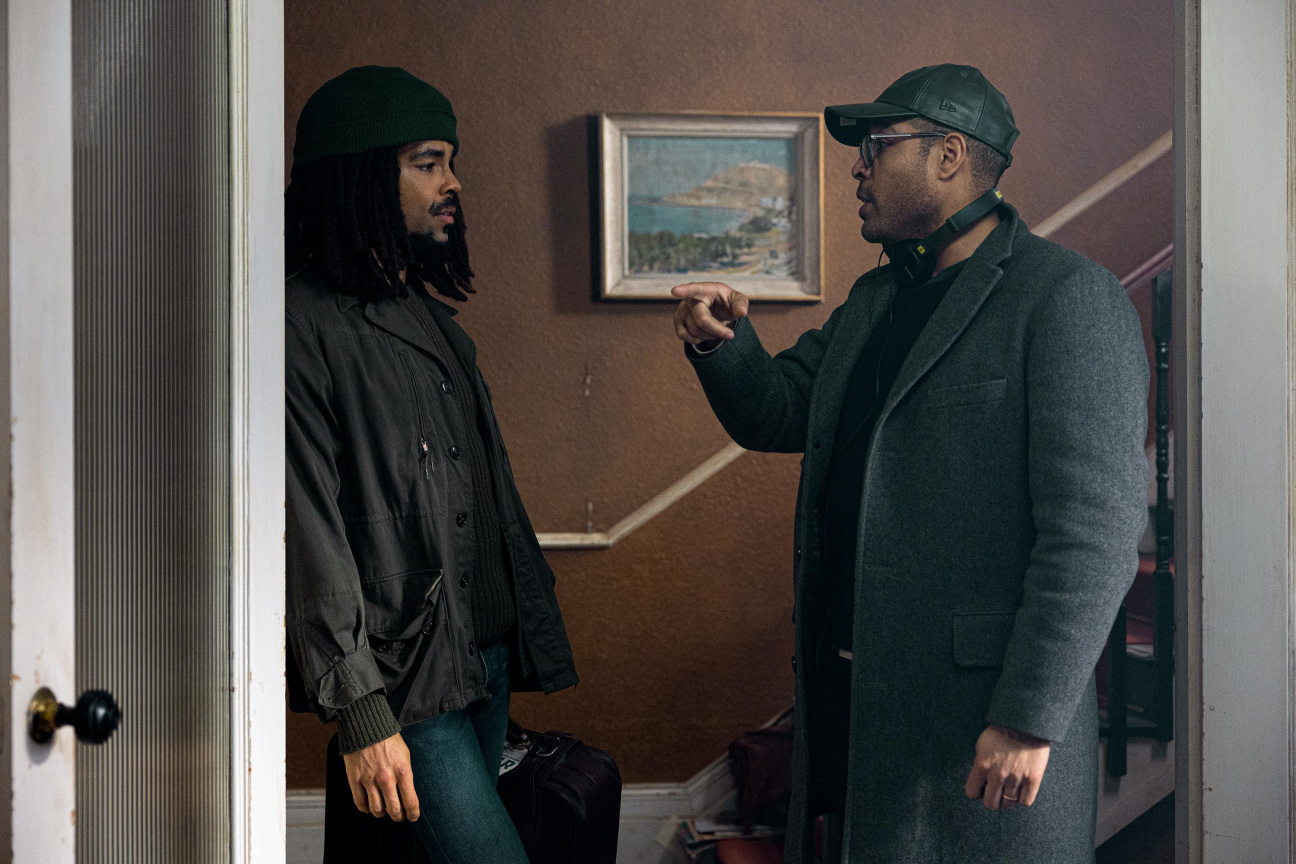
Director Reinaldo Marcus Green understands that real people can be the key to unlocking a good story. Following his 2021 Oscar-winning biopic King Richard, which recounts the life of Venus and Serena Williams’s unrelenting father, he is taking on the king of reggae in Bob Marley: One Love. Below, the filmmaker shares the painting that shaped the way he thinks about telling Black men’s stories.
CULTURED: How do you approach the biopic as a creative?
Green: Even with King Richard, I never thought about the biopic nature of it, more about what makes a good movie—what makes a great story. Most films are based on real people of some sort. So I've always had that nonfiction approach to filmmaking.
For this particular film, Bob Marley, I was thinking about City of God [2002]. That was the first film that came to mind in terms of the energy, the colors, the rawness, the authenticity. I thought, Could I make a musical biopic that felt that grounded? I don't know if we achieved it, but that was the benchmark.
There were obviously other films like Black Orpheus [1959], shot in the favelas of Rio. I kept coming back to Rio in Brazil as an energy and how they celebrate culture and beauty. It's a mixture of pain and oppression but also hope and inspiration. And those things are hopefully at the foundation of the work and the spirit of the film. There's a spirituality to Bob.
There were great films made in Jamaica, but nothing on this particular scale. Bob being a cultural icon, this being a real studio movie, we were gonna have resources in a way that I don't think a lot of the films that have been made had. I thought, Well, if we can keep that level of grounding, we can somehow capture the essence of the reality of what Jamaica is. Sadly, you walk in the streets of Churchtown and it hasn't changed much in 30 years. So we were able to pull a lot of the realities of life in Jamaica.
CULTURED: Why did this feel like the moment for this film?
Green: I can't answer that. The script came to me when it came to me. I can answer the moment that I decided it was how I was going to spend three years of my life. Like everyone else, I was a little nervous. I’m like, How do you even come close to touching Bob? But it was just the music. You go to any corner of the world and Bob Marley is playing. Whether it's a surf shop in Florida or Vietnam, Bob is everywhere. He's in the favelas of Brazil, he's in Korea. I think I read somewhere that next to Jesus Christ, he is one of the most recognizable faces on the planet. And it's like, Woah, where do you start?
Here's a guy that grew up poor, homeless, had nothing, and became one of the greatest musical icons of our time. That in and of itself is an incredible story. Why would I not want to be a part of that? He wasn't a perfect man, nobody is. But everything that he sang for was from a place of pain. He channeled that pain into something incredibly beautiful. It's amazing how artists can do that. That was enough for me. His music was worth the risk of making a movie about him.
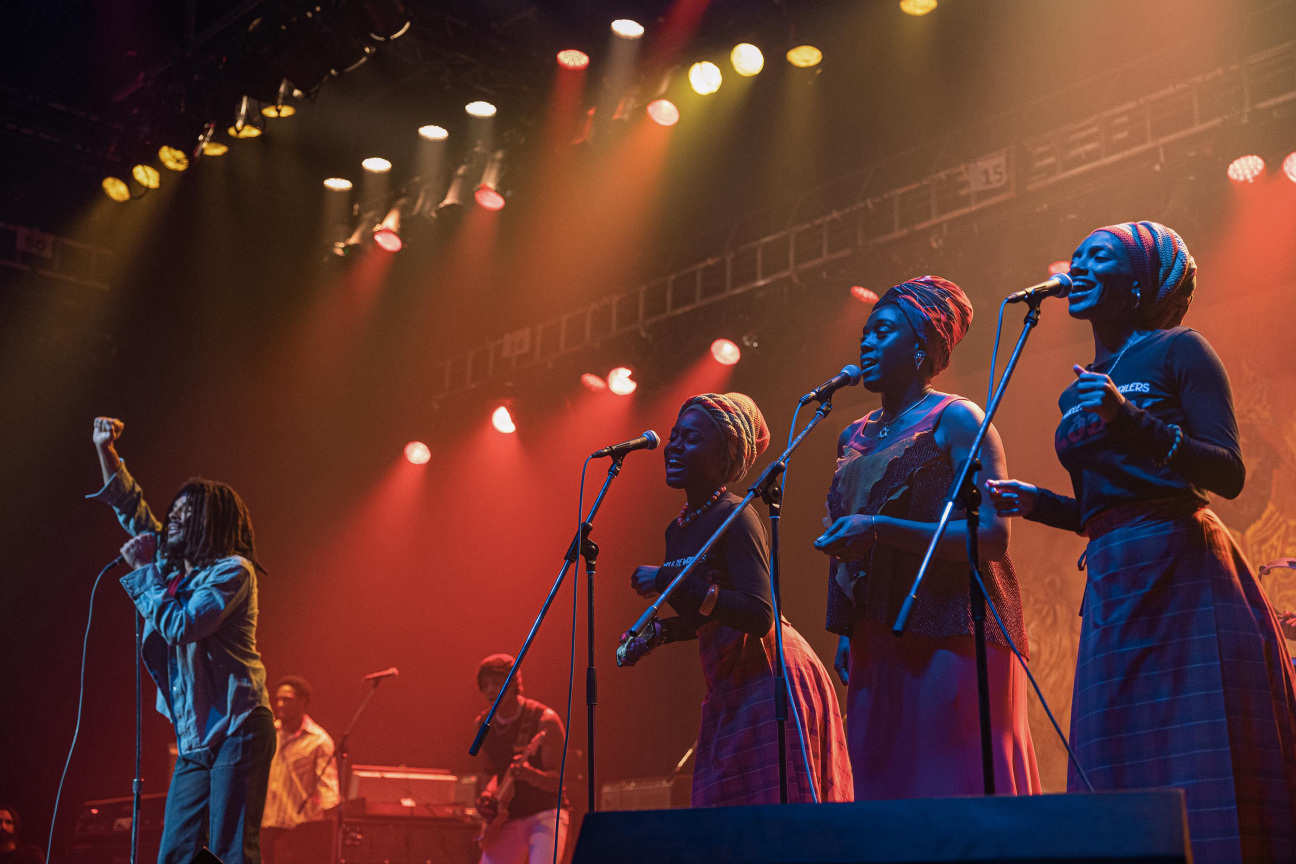
CULTURED: How do you find the right person to take on this kind of a role? What did Kingsley Ben-Adir have that you were looking for?
Green: There is a reality to the casting process. People either will come out for it or they won't. There's a boldness in even submitting, like, You think you could be Bob Marley? We looked at thousands of tapes, and when Kingsley's came in, there was just something different about it and one was his presence. He's striking to look at; the camera didn't want you to take your eyes off of him. You either have that or you don't—I think it's a combination of confidence and swag and believability and vulnerability. You want that baseline because then it's something that we can mold.
Once I saw the tape, it was immediate that he had something. A lot of the previous tapes were kind of mimicking Bob, but his was rhythmic in a different way.
CULTURED: Is there a particular piece of visual art that has translated into a scene for you?
Reinaldo Marcus Green: One piece of art that keeps reoccurring in my work is Basquiat's Defacement. I think it was sitting above Keith Haring's bed and it wasn't really considered art. It was just a really interesting narrative of that particular piece. From Monsters and Men [2018] to We Own This City [2022], to King Richard and Bob Marley, all these resistance stories just keep reoccurring. I think it was right after Monsters and Men, Drake had put [the painting] on a t-shirt as part of the rollout of the film. It was just really interesting how he made that connection as well, independently.
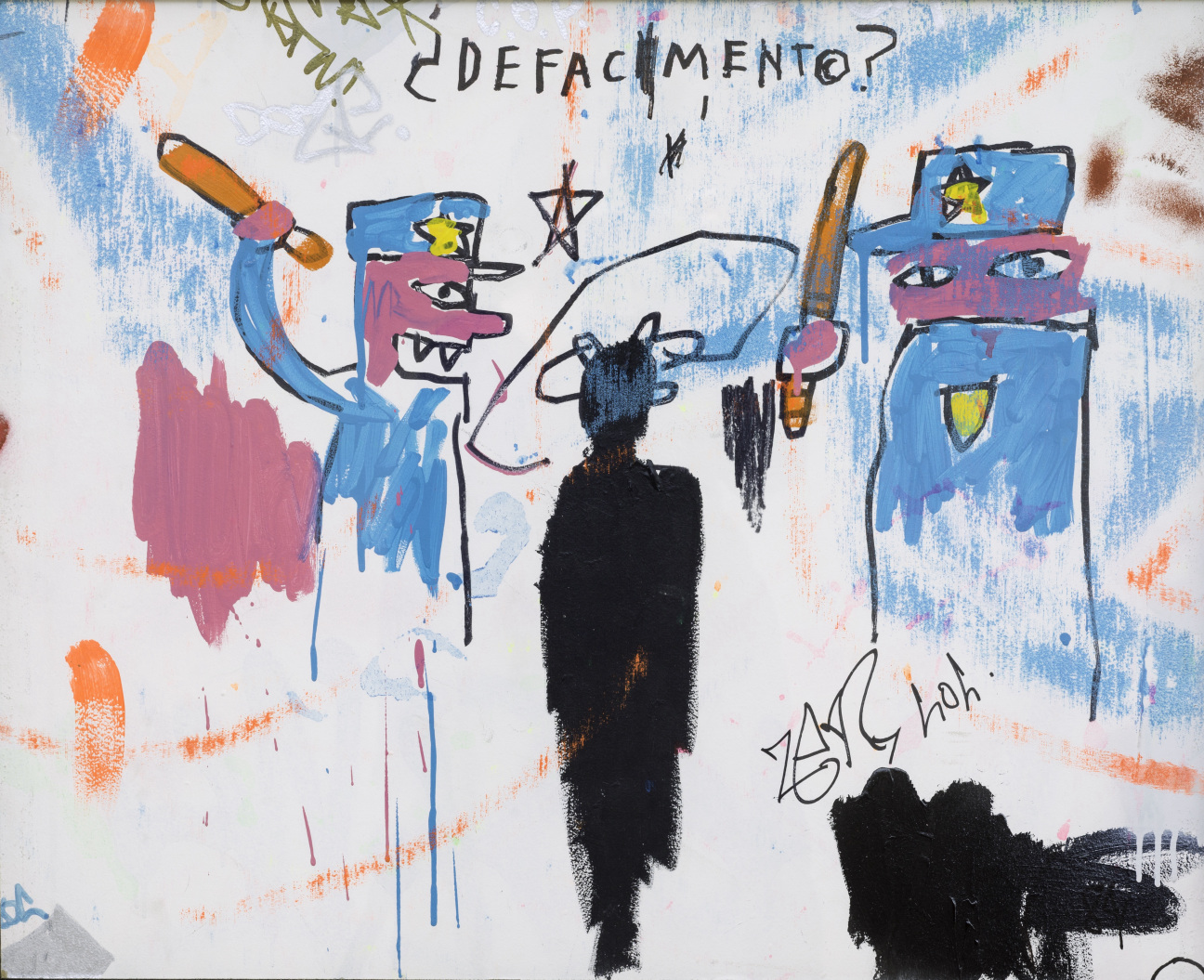
CULTURED: Do you remember when you first came across Defacement?
Green: Even inherent in the title is that shadowy black figure, and it's that feeling that it's any of us. It's not one person, it's a community of people, in between these two policemen or authoritative figures. Bob Marley at the time that we start our film, in 1976, is sort of sitting in between these two warring factions. You've got the People's Political Party and you've got Jamaica’s Labor Party, and he's this artist, this common man, in between these two sides that are trying to essentially crush him.
There's something about that particular painting that just says that that could be me. It doesn't matter how many advanced degrees [I have], if I have a master's degree from NYU. I'm a Black man at night. There's not a day that I don't wake up and think about that as a Black man in America. That is just our reality.
And the thing is, I have friends that are police officers and my dad worked in law enforcement. It's not an "us versus them," although I think oftentimes that's how our politics are. That's how they've been presented to us, not just in America, but all over the world. We're talking about real people.
CULTURED: Are there connections to Basquiat's work, or ways you might describe his work, that align with what you were going for tonally and visually in the film?
Green: I could draw the connections, but it's a tricky thing. The paintings, or any work of art, that I respond to, whether it's music or poetry—it tells a story. I think about setting you in a place and time immediately: Jamaica, 1976. I wasn't born until ‘81. So I have to take you on a cinematic journey and plop you into this period of time. Oftentimes, I think, How can I tell a story with less? How many shots do I need to tell this story? How much information can I put into every frame so that you, the audience, can understand where you are in place and time? Obviously there's title cards, but can you do it visually? That's always the first attempt.
I think my kids can look at Defacement and they understand it. They're like, "Oh, there's a guy in the middle and then there's two authoritative figures that want to bring him down." They just get it. And it is way more complex than that, but that's what makes art so beautiful. We can psychoanalyze until we're blue in the face, yet it is what it is.
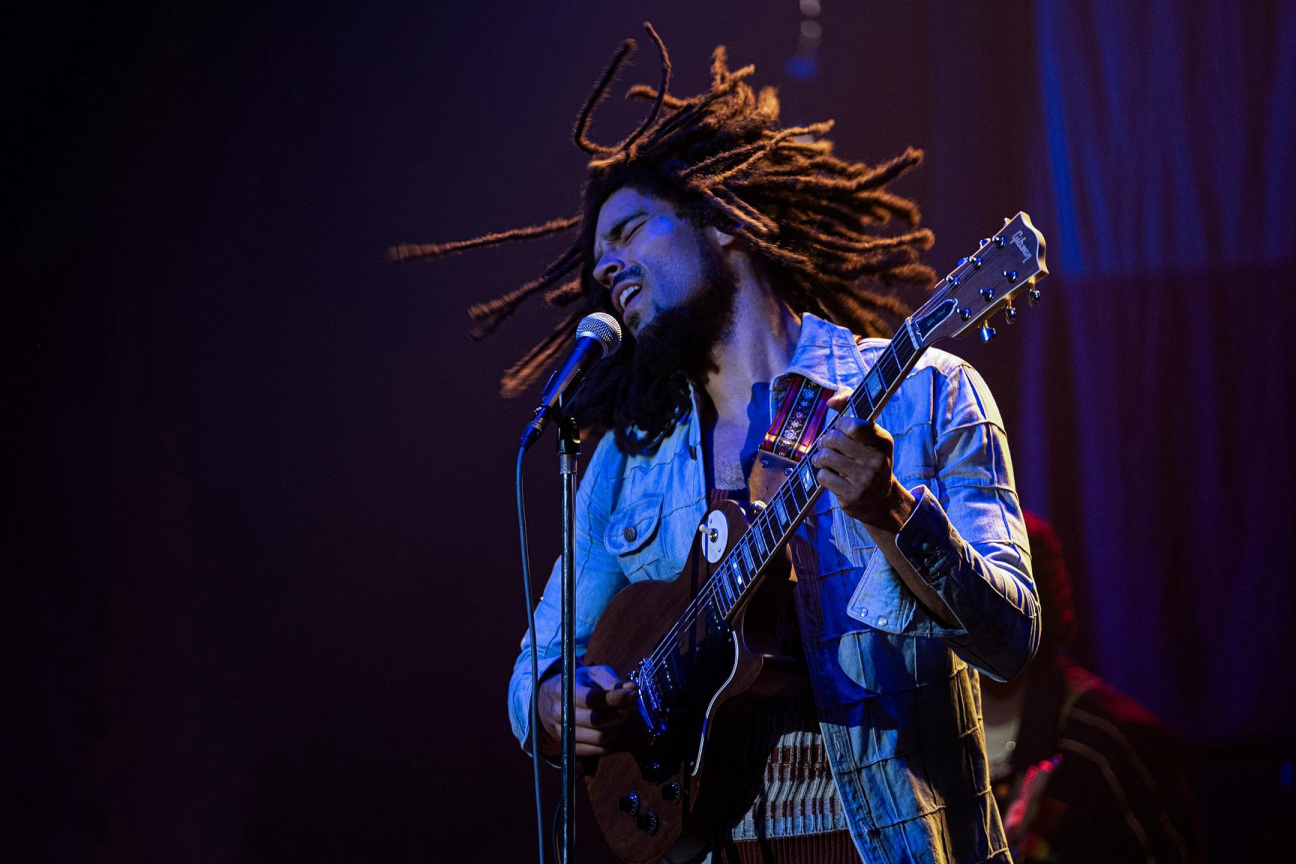
CULTURED: Were there certain elements of the preparation process and research that stand out in your memory?
Green: There are living family members and people that knew Bob intimately. There were tons of books that were written about Bob, but it was really about meeting people that knew him. And for me, that's the kind of character detail that hopefully winds up in the movie in ways that are hard to explain.
For instance, Ziggy Marley, who was a producer on the film, he was 12 or 13 when his father passed. But he still knew his dad and he knew how his dad walked, he knew how his dad dressed, he knew how his dad operated. It was about mining those conversations for the common denominator. If all of these people said the same thing about Bob, it must be true. When one person said this, this person said that, it's trickier to know what is true. Everybody that I met was Bob Marley's best friend. Well, he either had a lot of best friends or… But the idea that they felt that way, that tells you a lot about the human being that he was. He made them feel like he was their best friend. And the loyalty! I'm 42, and I was born the year Bob died. The loyalty of 42 years of people still talking about Bob as if he was still here today. In Rastafarian culture, there is no death, and I think that's so beautiful.
Somebody told me a story. We were shooting a scene [where] Bob was coming off the plane in Jamaica, returning home for the One Love Peace Concert. We were shooting the scene and there was a driver that was supposed to pick him up from the airport. In my mind, the driver comes and Bob gets in the back seat. No—Bob would never, ever ride in the back seat without somebody in the passenger seat. He would never be driven by his common man. It just shows you the kind of person where he’s like, "You're not my chauffeur, you're my brother."
This conversation is part of a series in which CULTURED asked filmmakers to reflect on a work of art that exposed them to new ways of seeing—and set the tone for a recent project. For more insight, read Lulu Wang on the Singaporean photographer whose work inspired both The Farewell and Expats, or Cord Jefferson on how Hollywood Shuffle helped shape American Fiction.

